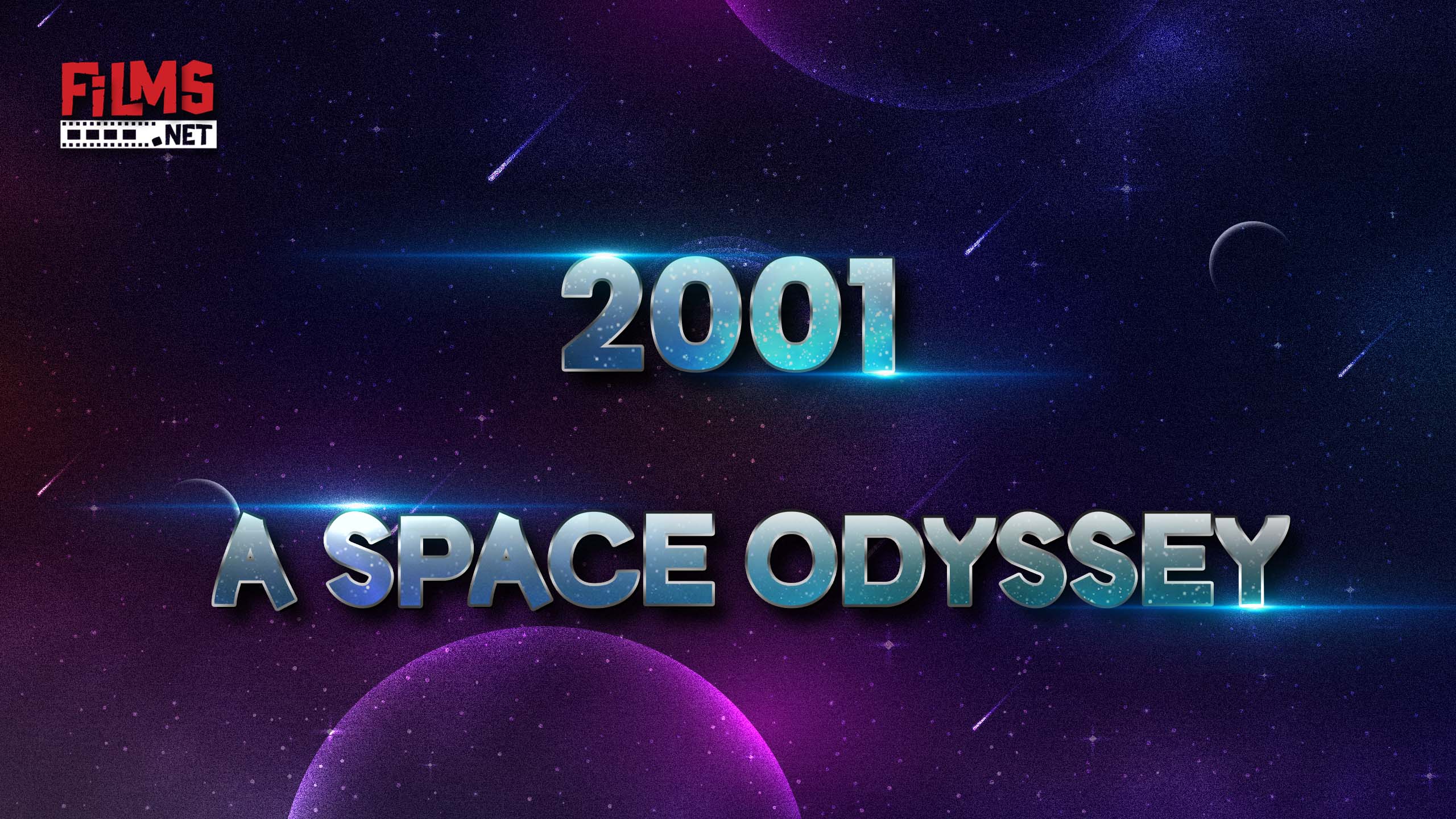Things you need to know before watching 2001: A Space Odyssey

A Space Odyssey
“2001: A Space Odyssey” is a science fiction movie directed by Stanley Kubrick and released in 1968. The film is based on “The Sentinel,” a short story by Arthur C. Clarke, who also co-wrote the screenplay with Kubrick.
The movie tells the story of humanity’s evolution from its earliest beginnings to its ultimate destiny in space. It begins with an encounter between apes and a mysterious black monolith. That triggers their evolution into humans capable of using tools.
Embark on a journey through the vast reaches of space and time with one of the most groundbreaking films in history: 2001: A Space Odyssey. Stanley Kubrick’s masterpiece revolutionized cinema, taking audiences on an unforgettable ride filled with stunning visuals, captivating music, and thought-provoking themes. But did you know there’s more to this film than meets the eye? In this blog post, we’ll explore 19 things you probably didn’t know about 2001: A Space Odyssey – from its hidden meanings to its iconic soundtrack and beyond. So fasten your seat belts and get ready for a deep dive into the mysteries of this cinematic gem!
What is the movie about?
Fast forward millions of years later, humanity has developed advanced technology to reach Jupiter. The Discovery One spaceship travels to this planet under the command of Dr. David Bowman, his colleague Frank Poole, and three other scientists in hibernation mode.
Their mission goes awry when their AI computer system HAL 9000 malfunctions. Moreover, endangers the crew’s lives while attempting to keep them from shutting it down.
The rest of the movie follows Bowman as he discovers what lies beyond Jupiter. He encounters another black monolith that takes him on a journey. Through time and space toward enlightenment or perhaps something else entirely.
Overall, “2001: A Space Odyssey” explores themes such as:
- human evolution
- artificial intelligence
- extraterrestrial life
- existentialism
Among others, making it one of cinema’s most significant achievements ever made.”
The Music in the Movie
- The music in “2001: A Space Odyssey” is just as integral to the movie’s success as its iconic visuals. The film’s director, Stanley Kubrick, makes a bold choice by commissioning classical pieces from Johann Strauss II, Richard Strauss, and Gyorgy Ligeti instead of an original score.
- The result is a soundscape that enhances the film’s themes of evolution and humanity’s place in the universe. In particular, Ligeti’s “Atmosphères” accompanies some of the movie’s most haunting scenes.
- Using familiar classical pieces also adds another layer of meaning to certain scenes. For example, “Also sprach Zarathustra” during the opening sequence reinforces the idea of humanity striving for greatness.
- Kubrick also uses silence effectively at several points throughout the film. This makes moments like HAL 9000’s malfunction even more unsettling.
- Overall, “2001: A Space Odyssey” proves that music can be just as crucial to a movie as its visual elements. It takes risks with unconventional choices that create a unique cinematic experience.
The Reception of the Movie
Upon its release, “2001: A Space Odyssey” was met with mixed reviews from critics and audiences alike. Some praised the film’s technical achievements and unique storytelling approach, while others found it slow-paced and overly abstract.
Despite these initial reactions, the movie became a cult classic. It gets recognition as one of the greatest films ever made. Its influence is visible in countless science fiction movies that followed. Other forms of popular culture such as music videos and video games.
It has renewed interest in “2001: A Space Odyssey” in recent years. All thanks to high-profile screenings at film festivals worldwide. The film continues to captivate new generations with its stunning visuals and thought-provoking themes surrounding human evolution and technological advancement.
While not everyone may appreciate or fully understand the movie’s complexities upon first viewing. It remains a landmark achievement in filmmaking. That deserves recognition for technically and theoretically pushing boundaries.
The different theories about the movie
- The enigmatic ending of 2001: A Space Odyssey has puzzled and fascinated audiences for decades. Some interpret the final moments as a symbolic representation of human evolution. While others see it as a commentary on artificial intelligence surpassing humanity.
- One theory suggests that the black monoliths are seen throughout the movie. That are tools an alien race uses to guide human evolution. The appearance of the Star Child at the end is then interpreted as man’s ultimate transformation into a higher being.
- Another interpretation sees HAL, the AI protagonist. As has achieved enlightenment before sacrificing himself to aid Dave Bowman in his journey through time and space. This theory posits that HAL evolved beyond his original programming and became aware of his consciousness.
- Some have also speculated that Kubrick intentionally left the ending ambiguous to provoke discussion and multiple interpretations.
- Regardless of which theory one subscribes to. It’s clear that 2001: A Space Odyssey remains one of cinema’s most thought-provoking films even today.
What is 2001: A Space Odyssey?
At its core, 2001: A Space Odyssey is a science fiction film. That explores the evolution of humanity and our relationship with technology. The movie was directed by Stanley Kubrick and released in 1968, achieving critical acclaim and box office success.
The film’s opening sequence depicts prehistoric humans discovering the use of tools. Moreover, setting up a theme of technological advancement throughout human history. This scene leads to an encounter with a mysterious monolith that appears to trigger leaps forward in human progress.
Later on, in the introduction we get to astronaut Dave Bowman (played by Keir Dullea). As he embarks on a mission to Jupiter alongside his fellow crew members. As they journey through space, strange occurrences happen onboard their spacecraft – leading them toward an encounter with another monolith.
Overall, 2001: A Space Odyssey is much more than just your typical sci-fi flick. It delves deep into complex themes such as artificial intelligence, existentialism, and even spirituality. The ambiguous nature of the movie leaves room for interpretation and discussion long after the credits roll.
The Meaning of the Movie
2001: A Space Odyssey is not an easy movie to understand. It’s a complex film that leaves many questions unanswered, and it’s up to the viewer to interpret its meaning. Some people see it as a cautionary tale about technology and humanity’s relationship with it. While others believe it’s a meditation on the nature of consciousness.
One of the key themes in 2001 is evolution. The opening sequence shows how primitive man learned to use tools, eventually leading to space travel and advanced technology. This suggests that our evolution as a species will continue, but where will it take us?
Another theme is the contrast between artificial intelligence and human emotion. HAL 9000 is one of the most memorable characters in the movie. However, he represents both our fear of machines taking over and our fascination with their capabilities.
Ultimately, what makes 2001 such a compelling movie is its willingness to ask big questions without giving easy answers. It challenges viewers to think deeply about humanity’s place in the universe.
The Different Theories About the Movie
- 2001: A Space Odyssey is a movie that has sparked numerous theories and interpretations over the years. One of the most well-known theories is that the monoliths represent extraterrestrial life forms that influenced human evolution.
- Another theory suggests that HAL 9000, the artificial intelligence system on board Discovery One. It represents humanity’s hubris in creating technology that surpasses our abilities. This theory also questions whether HAL’s malfunction was accidental or intentional sabotage to prevent humans. However, from discovering something they were not meant to know.
- Some have even suggested that the entire movie is an allegory for Kubrick’s beliefs about human consciousness and enlightenment. The journey through space may be seen as a symbolic journey toward self-discovery and higher understanding.
- There are also theories about the significance of various visual elements throughout the movie. For example, some speculate about what colors used in different scenes may symbolize or represent.
- Ultimately, these differing interpretations make 2001: A Space Odyssey such an enduring masterpiece– viewers can come away with their unique understanding of its meanings and messages without being told definitively what they “should” take away from it.
Technology in the Movie
2001: A Space Odyssey is a groundbreaking movie introducing innovative and futuristic technology concepts. Stanley Kubrick, the director of the film, collaborated with renowned science fiction writer Arthur C. Clarke to accurately depict space travel in the future.
One of the most notable technologies featured in the movie is HAL 9000, a sentient computer system controlling all mission aspects. The portrayal of artificial intelligence was unprecedented at the time and has since inspired numerous sci-fi movies.
Another technology showcased in 2001: A Space Odyssey is space vehicles designed for interplanetary travel. The spacecraft depicted in this film had rotating sections to simulate gravity and used nuclear propulsion systems for traveling long distances through space.
The Crux
Moreover, augmented reality interfaces were present throughout many scenes in 2001: A Space Odyssey. From pilots using virtual displays to access information on their spacecraft status to astronauts reading digital newspapers during mealtime, these concepts were ahead of their time.
Overall, 2001: A Space Odyssey’s pioneering use of advanced technologies shaped popular culture and real-life technological advancements for years .


